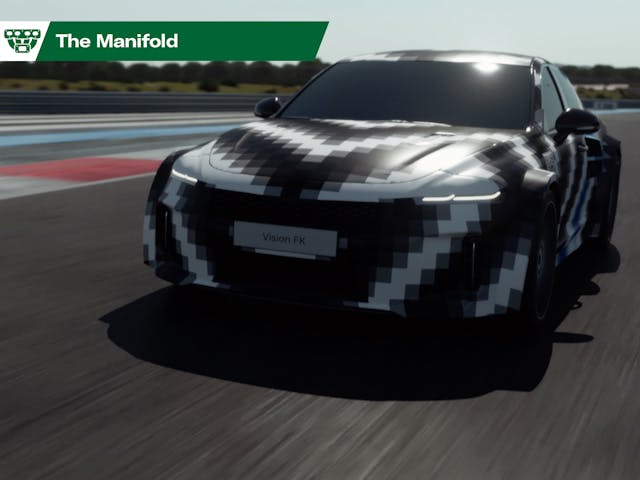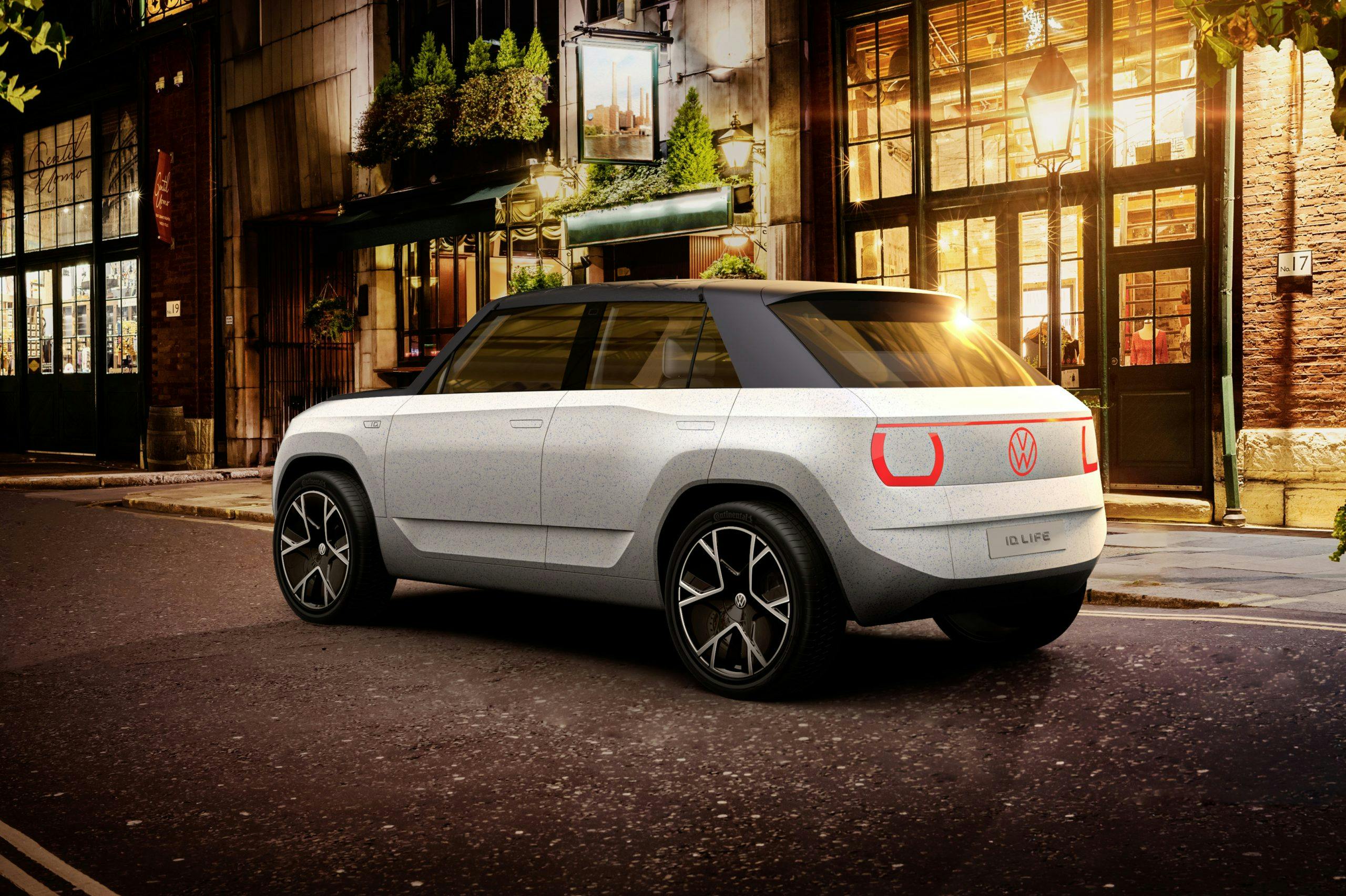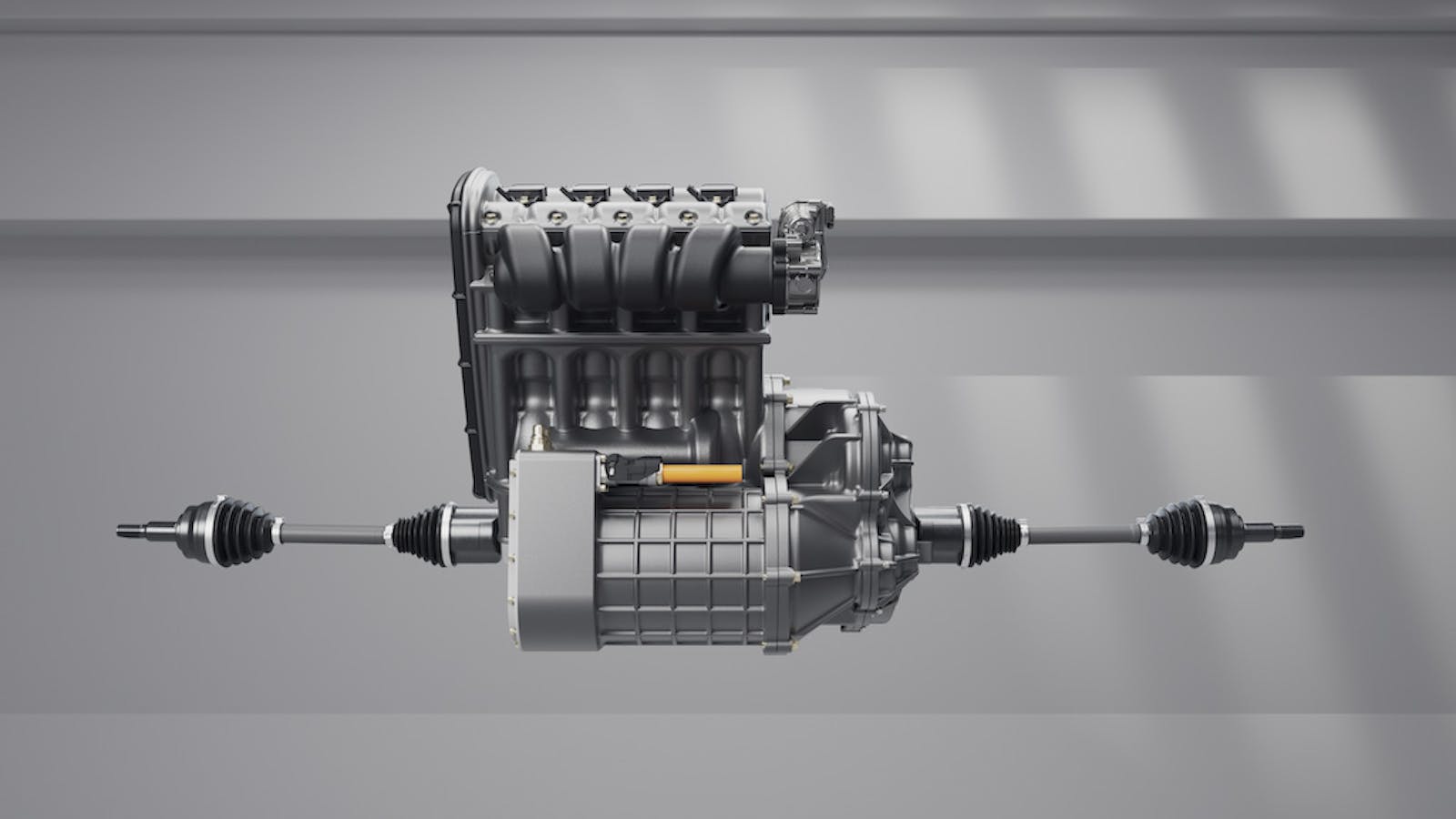Media | Articles
Hyundai teases mad-scientist coupe, VW plans $25K EV, Italy’s supercars spared from ICE ban?

Hyundai’s wild hydrogen future doesn’t neglect the speed freaks
Intake: Hyundai plans to build a slew of hydrogen-powered fuel-cell platforms for the commercial sector by 2028—and even a tractor in 2023—but it’s adamant that this exotic, zero-emissions tech can be fun, too. Meet the Vision FK. It’s a 600-hp, RWD coupe with some mean fender flares and a theoretical gas-free range of 372 miles. How does it generate those numbers? Its fuel-cell convertor is married to a plug-in electric drivetrain sourced from Rimac, with one motor powering each rear wheel. As suggested by the generous air intakes on its flanks, the bulk of the drivetrain (plus the dual hydrogen tanks) sits amidships. 60 mph should arrive in less than four seconds.
Exhaust: Hyundai’s out-of-the-box thinking is impressive, and its holistic approach even more so. Amid the higher-environmental-impact plans for the commercial sector, we’re encouraged that Hyundai is still remembering the speed freaks. Bring this wild concept to production, yes?
VW ID Life is subcompact and sub-$25,000—if it comes to the U.S.
Intake: Volkswagen has previewed its smallest next-generation EV to date. The ID.Life is a micro SUV designed to sell at a micro price of just €20,000 ($24,000). The front-drive EV has sprightly performance thanks to a 234-hp electric motor and is capable of hitting 60 mph in under seven seconds, while still offering a 250-mile range and DC fast charging. The cute-yet-boxy styling is quite a departure from the ID.3 and ID.4 and feels more playful, with an interior which can convert to a cinema, gaming lounge, or even a bedroom. Currently still a concept, it features cameras to replace mirrors and a range of natural, renewable materials. A production version is not expected until 2025.
Exhaust: The ID. Life—or ID. 2, as it the production version would likely be called—is probably too small for America, with its main market being Europe. VW has pitched it as a global model, however, so there is a small chance of it making its way to the U.S.A., if there’s demand.
Could Ferrari, Lamborghini, and Pagani escape Europe’s all-electric agenda?

Intake: Italy’s minister for ecological transition is in talks with the European Union to exempt the country’s supercar makers from a 2035 ban on combustion-engined cars. The legislation, which would see all ICE cars axed, has not yet been approved and Roberto Cingolani tells Bloomberg TV that Italy is seeking leniency for its low-volume exotic car manufacturers. Cingolani, who is a former non-executive director of Ferrari, does not dispute the need for the industry as a whole to embrace electrification, but reckons that since the small number of high-profile supercars made in Italy isn’t responsible for a very high percentage of global emissions, it should have some leeway. “There is a clear awareness about the need for a transition toward electric mobility,” Cingolani says. “On a century scale transformation, this is not a problem.”
Marketplace
Buy and sell classics with confidence
Exhaust: Fans of the fire-breathing V-8 and V-12 engines of Italy will be heartened by this news, but it would only be a stay of execution. Ferrari’s first all-electric car is due in 2025 and Lamborghini has already pledged to hybridize its range by 2024, before introducing its first EV soon after.
125 years ago, an EV won the first race held on a track

Intake: On September 7, 1896—125 years ago today—C. H. Whiting won the first motor race held on a racetrack. With a crowd of 40,000 people looking on, Whiting drove a Riker electric car to victory over five laps on a mile-long dirt oval at the Rhode Island State Fairgrounds in Cranston, Rhode Island. Whiting completed the race in just over five minutes, averaging about 24 mph, to defeat seven other drivers, six of whom were driving gas-powered cars. Electric vehicles soon rose in popularity, especially among women, who appreciated their ease of operation. Then Henry Ford rolled out the Model T in 1908—at about one-third the cost of an EV. We know how that story ends.
Exhaust: To the uninitiated, electric cars appear to be a modern invention, but not only do they date to 1890 (and William Morrison’s six-passenger EV), they were competitive with internal combustion engine–powered cars of the era. Electric cars couldn’t compete when it came to price, however. While other automakers tried to resurrect the idea at various times over the years, not until the Tesla Model S arrived in 2012 did EVs truly break into the mainstream. Now they are here to stay.
Honda leaps into the off-road fray with new TrailSport editions
Intake: Honda announced a new TrailSport special edition trim for some of its light-duty trucks, creating a new halo for Big H’s big vehicles. The Trailsport trim promises goodies such as burlier tires, increased ground clearance, off-road-tuned suspension components, underbody armor, and enhanced capability for its all-wheel-drive systems. One major thing to note here: These niceties are coming in the next few years, depending on where in its cycle a given model (like the Pilot, Passport, or Ridgeline) is. In the immediate future, a TrailSport will net you revised front and rear styling, high-contrast orange interior stitching, and all-weather floor mats.
Exhaust: We’re not surprised to see yet another automaker tap into the dusty well of off-road capability—or at least the appearance of it, at first. Subaru’s Outback Wilderness is an appealing package to many, so much so that the Forester will soon get the same treatment. Toyota’s been at it for a while with the TRD packages, so there’s a precedent for Honda getting involved. Cynically, we’d expect the Pilot and Passport versions of this special edition to be more appealing than the Ridgeline—a truck that is as honest as they come, sometimes in spite of itself.








